-
EXECUTIVE SUMMARY 14
-
MARKET INTRODUCTION 16
-
DEFINITION 16
-
SCOPE OF THE STUDY 16
-
MARKET STRUCTURE 16
-
RESEARCH METHODOLOGY 17
-
MARKET DYNAMICS 24
-
INTRODUCTION 24
-
DRIVERS 25
- GROWING INDUSTRIAL AUTOMATION 25
- DEMAND FROM
- DRIVERS IMPACT ANALYSIS 26
- HIGH COST ASSOCIATED WITH INGAAS CAMERAS 26
- RESTRAINT
-
THE MILITARY & DEFENSE SECTOR 25
-
RESTRAINT 26
-
IMPACT ANALYSIS 27
-
OPPORTUNITY 27
- EMERGENCE OF INDUSTRY 4.0
-
COVID-19 IMPACT ANALYSIS 27
- IMPACT ON SEMICONDUCTOR COMPONENT
- IMPACT ON THE GLOBAL INGAAS CAMERA MARKET 28
-
MANUFACTURERS 27
-
IMPACT ON SUPPLY CHAIN 28
-
MARKET FACTOR ANALYSIS 30
-
SUPPLY CHAIN ANALYSIS 30
- RAW MATERIAL
- COMPONENT MANUFACTURERS 30
- SYSTEM INTEGRATORS
- END USERS 31
-
SUPPLIERS 30
-
PORTER’S FIVE FORCES MODEL 31
- BARGAINING POWER OF SUPPLIERS 32
- BARGAINING POWER OF BUYERS 32
- INTENSITY
-
THREAT OF NEW ENTRANTS 32
-
THREAT OF SUBSTITUTES 32
-
OF RIVALRY 32
-
GLOBAL INGAAS CAMERA MARKET, BY SCANNING TYPE 33
-
OVERVIEW
-
AREA SCAN 34
-
LINE SCAN 34
-
GLOBAL INGAAS CAMERA MARKET,
-
BY CAMERA COOLING TECHNOLOGY 35
-
OVERVIEW 35
-
COOLED 36
-
UNCOOLED 36
-
GLOBAL INGAAS CAMERA MARKET, BY APPLICATION 37
-
OVERVIEW
-
MILITARY & DEFENSE 38
-
INDUSTRIAL AUTOMATION 38
-
SURVEILLANCE, SAFETY, AND SECURITY 39
-
SCIENTIFIC RESEARCH 39
-
SPECTROSCOPY
-
OTHERS 39
-
GLOBAL INGAAS CAMERA MARKET, BY REGION 40
-
OVERVIEW 40
-
NORTH AMERICA 42
- MARKET ESTIMATES AND FORECAST,
- MARKET ESTIMATES AND FORECAST, BY SCANNING TYPE,
- MARKET ESTIMATES AND FORECAST, BY CAMERA COOLING TECHNOLOGY,
- MARKET ESTIMATES AND FORECAST, BY APPLICATION, 2020-2027
- US 46
- CANADA 47
- MEXICO 49
-
BY COUNTRY, 2020-2027 42
-
TYPE, 2020-2027 47
-
TECHNOLOGY, 2020-2027 48
-
SCANNING TYPE, 2020-2027 49
-
COOLING TECHNOLOGY, 2020-2027 49
-
APPLICATION, 2020-2027 50
-
EUROPE 51
- MARKET ESTIMATES AND FORECAST,
- MARKET ESTIMATES AND FORECAST, BY SCANNING TYPE,
- MARKET ESTIMATES AND FORECAST, BY CAMERA COOLING TECHNOLOGY,
- MARKET ESTIMATES AND FORECAST, BY APPLICATION, 2020-2027
- UK 54
- GERMANY 56
- FRANCE 57
- REST OF EUROPE 59
-
BY COUNTRY, 2020-2027 51
-
TYPE, 2020-2027 56
-
TECHNOLOGY, 2020-2027 56
-
SCANNING TYPE, 2020-2027 57
-
COOLING TECHNOLOGY, 2020-2027 58
-
APPLICATION, 2020-2027 58
-
AND FORECAST, BY SCANNING TYPE, 2020-2027 59
-
BY CAMERA COOLING TECHNOLOGY, 2020-2027 59
-
BY APPLICATION, 2020-2027 60
-
ASIA-PACIFIC 61
- MARKET ESTIMATES
- MARKET ESTIMATES AND FORECAST,
- MARKET ESTIMATES AND FORECAST, BY CAMERA
- MARKET ESTIMATES AND FORECAST, BY APPLICATION,
- CHINA 64
- JAPAN 66
- INDIA 67
- SOUTH KOREA 69
- REST OF ASIA-PACIFIC 70
-
AND FORECAST, BY COUNTRY, 2020-2027 61
-
BY SCANNING TYPE, 2020-2027 62
-
COOLING TECHNOLOGY, 2020-2027 62
-
SCANNING TYPE, 2020-2027 64
-
COOLING TECHNOLOGY, 2020-2027 65
-
APPLICATION, 2020-2027 65
-
FORECAST, BY SCANNING TYPE, 2020-2027 66
-
BY CAMERA COOLING TECHNOLOGY, 2020-2027 66
-
BY APPLICATION, 2020-2027 67
-
FORECAST, BY SCANNING TYPE, 2020-2027 67
-
BY CAMERA COOLING TECHNOLOGY, 2020-2027 68
-
BY APPLICATION, 2020-2027 68
-
AND FORECAST, BY SCANNING TYPE, 2020-2027 69
-
BY CAMERA COOLING TECHNOLOGY, 2020-2027 69
-
BY APPLICATION, 2020-2027 70
-
ESTIMATES AND FORECAST, BY SCANNING TYPE, 2020-2027 70
-
AND FORECAST, BY CAMERA COOLING TECHNOLOGY, 2020-2027 71
-
AND FORECAST, BY APPLICATION, 2020-2027 71
-
REST OF THE WORLD 72
-
MARKET ESTIMATES AND FORECAST, BY REGION, 2020-2027 72
-
AND FORECAST, BY SCANNING TYPE, 2020-2027 73
-
BY CAMERA COOLING TECHNOLOGY, 2020-2027 73
-
BY APPLICATION, 2020-2027 74
-
MARKET ESTIMATES
-
MARKET ESTIMATES AND FORECAST,
-
MARKET ESTIMATES AND FORECAST,
-
MIDDLE EAST & AFRICA 75
-
MARKET ESTIMATES AND FORECAST, BY SCANNING TYPE, 2020-2027 75
-
ESTIMATES AND FORECAST, BY CAMERA COOLING TECHNOLOGY, 2020-2027 76
-
MARKET
-
MARKET ESTIMATES AND FORECAST, BY APPLICATION, 2020-2027 76
-
COMPETITIVE LANDSCAPE 79
-
MERGERS & ACQUISITIONS/EXPANSIONS/PARTNERSHIPS/JOINT VENTURES 84
-
SOUTH AMERICA
-
MARKET ESTIMATES AND FORECAST, BY SCANNING TYPE, 2020-2027 77
-
MARKET ESTIMATES AND FORECAST, BY CAMERA COOLING TECHNOLOGY, 2020-2027
-
MARKET ESTIMATES AND FORECAST, BY APPLICATION, 2020-2027 78
-
OVERVIEW 79
-
COMPETITIVE BENCHMARKING
-
COMPETITOR DASHBOARD 81
-
KEY DEVELOPMENTS & GROWTH STRATEGIES
- PRODUCT LAUNCHES/PRODUCT DEVELOPMENT/SERVICE DEPLOYMENTS 82
-
COMPANY
-
PROFILE 85
-
HAMAMATSU PHOTONICS K.K. 85
- COMPANY OVERVIEW 85
- FINANCIAL OVERVIEW 86
- PRODUCTS OFFERED 86
- KEY DEVELOPMENTS
- SWOT ANALYSIS 87
- KEY STRATEGIES 87
-
SENSORS
- COMPANY OVERVIEW 88
- FINANCIAL OVERVIEW 88
- PRODUCTS/SOLUTIONS/SERVICES OFFERED 89
- KEY DEVELOPMENTS 89
-
UNLIMITED 88
-
TELEDYNE TECHNOLOGIES 90
- COMPANY OVERVIEW 90
- FINANCIAL
- PRODUCTS/SOLUTIONS/SERVICES OFFERED 91
- KEY DEVELOPMENTS
- SWOT ANALYSIS 93
- KEY STRATEGIES 93
-
OVERVIEW 91
-
XENICS 94
- COMPANY OVERVIEW 94
- FINANCIAL OVERVIEW 94
- PRODUCTS/SOLUTIONS/SERVICES
- KEY DEVELOPMENTS 95
- KEY STRATEGIES 95
- COMPANY OVERVIEW 96
- FINANCIAL
- PRODUCTS/SOLUTIONS/SERVICES OFFERED 96
- KEY DEVELOPMENTS
- KEY STRATEGIES 97
-
OFFERED 94
-
NEW IMAGING TECHNOLOGIES 96
-
OVERVIEW 96
-
ALLIED VISION TECHNOLOGIES 98
- FINANCIAL OVERVIEW 98
- PRODUCTS/SOLUTIONS/SERVICES
- KEY DEVELOPMENTS 99
- SWOT ANALYSIS 100
-
COMPANY OVERVIEW 98
-
OFFERED 99
-
KEY STRATEGIES 100
-
PHOTON ETC 101
- COMPANY OVERVIEW 101
- FINANCIAL OVERVIEW 101
- PRODUCTS/SOLUTIONS/SERVICES OFFERED
- KEY DEVELOPMENTS 101
-
OXFORD INSTRUMENTS 102
- FINANCIAL OVERVIEW 102
- PRODUCTS/SOLUTIONS/SERVICES
- KEY DEVELOPMENTS 103
- SWOT ANALYSIS 103
-
COMPANY OVERVIEW 102
-
OFFERED 103
-
KEY STRATEGIES 103
-
KAPPA OPTRONICS 104
- COMPANY OVERVIEW 104
- FINANCIAL OVERVIEW 104
- PRODUCTS/SOLUTIONS/SERVICES OFFERED
- KEY DEVELOPMENTS 104
-
GHOPTO 105
- COMPANY
- FINANCIAL OVERVIEW 105
- PRODUCTS/SOLUTIONS/SERVICES
- KEY DEVELOPMENTS 105
-
OVERVIEW 105
-
OFFERED 105
-
RAPTOR PHOTONICS LIMITED
- COMPANY OVERVIEW 106
- FINANCIAL OVERVIEW 106
- KEY DEVELOPMENTS 107
- COMPANY OVERVIEW 108
- FINANCIAL OVERVIEW
- PRODUCTS/SOLUTIONS/SERVICES OFFERED 109
- KEY DEVELOPMENTS
- SWOT ANALYSIS 109
- KEY STRATEGIES 110
-
PRODUCTS/SOLUTIONS/SERVICES OFFERED 106
-
FLIR SYSTEMS INC. 108
-
-
LIST OF TABLES
-
GLOBAL INGAAS CAMERA MARKET, BY SCANNING TYPE, 2020-2027
-
(USD MILLION) 34
-
GLOBAL INGAAS CAMERA MARKET, BY CAMERA COOLING TECHNOLOGY,
-
GLOBAL INGAAS CAMERA MARKET, BY APPLICATION,
-
GLOBAL INGAAS CAMERA MARKET, BY REGION,
-
NORTH AMERICA: INGAAS CAMERA MARKET, BY
-
COUNTRY, 2020-2027 (USD MILLION) 42
-
NORTH AMERICA: INGAAS CAMERA MARKET,
-
BY SCANNING TYPE, 2020-2027 (USD MILLION) 43
-
NORTH AMERICA: INGAAS
-
CAMERA MARKET, BY CAMERA COOLING TECHNOLOGY, 2020-2027 (USD MILLION) 44
-
TABLE
-
NORTH AMERICA: INGAAS CAMERA MARKET, BY APPLICATION, 2020-2027 (USD MILLION) 45
-
US: INGAAS CAMERA MARKET, BY SCANNING TYPE, 2020-2027 (USD MILLION) 46
-
US: INGAAS CAMERA MARKET, BY CAMERA COOLING TECHNOLOGY, 2020-2027 (USD
-
MILLION) 46
-
US: INGAAS CAMERA MARKET, BY APPLICATION, 2020-2027 (USD
-
MILLION) 47
-
CANADA: INGAAS CAMERA MARKET, BY SCANNING TYPE, 2020-2027
-
(USD MILLION) 47
-
CANADA: INGAAS CAMERA MARKET, BY CAMERA COOLING TECHNOLOGY,
-
CANADA: INGAAS CAMERA MARKET, BY APPLICATION,
-
MEXICO: INGAAS CAMERA MARKET, BY SCANNING
-
TYPE, 2020-2027 (USD MILLION) 49
-
MEXICO: INGAAS CAMERA MARKET, BY
-
CAMERA COOLING TECHNOLOGY, 2020-2027 (USD MILLION) 49
-
MEXICO: INGAAS
-
CAMERA MARKET, BY APPLICATION, 2020-2027 (USD MILLION) 50
-
EUROPE:
-
INGAAS CAMERA MARKET, BY COUNTRY, 2020-2027 (USD MILLION) 51
-
EUROPE:
-
INGAAS CAMERA MARKET, BY SCANNING TYPE, 2020-2027 (USD MILLION) 52
-
TABLE 20
-
EUROPE: INGAAS CAMERA MARKET, BY CAMERA COOLING TECHNOLOGY, 2020-2027 (USD MILLION)
-
EUROPE: INGAAS CAMERA MARKET, BY APPLICATION, 2020-2027 (USD MILLION)
-
UK: INGAAS CAMERA MARKET, BY SCANNING TYPE, 2020-2027 (USD MILLION)
-
UK: INGAAS CAMERA MARKET, BY CAMERA COOLING TECHNOLOGY, 2020-2027
-
(USD MILLION) 55
-
UK: INGAAS CAMERA MARKET, BY APPLICATION, 2020-2027
-
(USD MILLION) 55
-
GERMANY: INGAAS CAMERA MARKET, BY SCANNING TYPE,
-
GERMANY: INGAAS CAMERA MARKET, BY CAMERA
-
COOLING TECHNOLOGY, 2020-2027 (USD MILLION) 56
-
GERMANY: INGAAS CAMERA
-
MARKET, BY APPLICATION, 2020-2027 (USD MILLION) 57
-
FRANCE: INGAAS
-
CAMERA MARKET, BY SCANNING TYPE, 2020-2027 (USD MILLION) 57
-
FRANCE:
-
INGAAS CAMERA MARKET, BY CAMERA COOLING TECHNOLOGY, 2020-2027 (USD MILLION) 58
-
FRANCE: INGAAS CAMERA MARKET, BY APPLICATION, 2020-2027 (USD MILLION)
-
REST OF EUROPE: INGAAS CAMERA MARKET, BY SCANNING TYPE, 2020-2027
-
(USD MILLION) 59
-
REST OF EUROPE: INGAAS CAMERA MARKET, BY CAMERA COOLING
-
TECHNOLOGY, 2020-2027 (USD MILLION) 59
-
REST OF EUROPE: INGAAS CAMERA
-
MARKET, BY APPLICATION, 2020-2027 (USD MILLION) 60
-
ASIA-PACIFIC: INGAAS
-
CAMERA MARKET, BY COUNTRY, 2020-2027 (USD MILLION) 61
-
ASIA-PACIFIC:
-
INGAAS CAMERA MARKET, BY SCANNING TYPE, 2020-2027 (USD MILLION) 62
-
TABLE 36
-
ASIA-PACIFIC: INGAAS CAMERA MARKET, BY CAMERA COOLING TECHNOLOGY, 2020-2027 (USD
-
MILLION) 63
-
ASIA-PACIFIC: INGAAS CAMERA MARKET, BY APPLICATION, 2020-2027
-
(USD MILLION) 64
-
CHINA: INGAAS CAMERA MARKET, BY SCANNING TYPE, 2020-2027
-
(USD MILLION) 64
-
CHINA: INGAAS CAMERA MARKET, BY CAMERA COOLING TECHNOLOGY,
-
CHINA: INGAAS CAMERA MARKET, BY APPLICATION,
-
JAPAN: INGAAS CAMERA MARKET, BY SCANNING
-
TYPE, 2020-2027 (USD MILLION) 66
-
JAPAN: INGAAS CAMERA MARKET, BY CAMERA
-
COOLING TECHNOLOGY, 2020-2027 (USD MILLION) 66
-
JAPAN: INGAAS CAMERA
-
MARKET, BY APPLICATION, 2020-2027 (USD MILLION) 67
-
INDIA: INGAAS CAMERA
-
MARKET, BY SCANNING TYPE, 2020-2027 (USD MILLION) 67
-
INDIA: INGAAS
-
CAMERA MARKET, BY CAMERA COOLING TECHNOLOGY, 2020-2027 (USD MILLION) 68
-
TABLE
-
INDIA: INGAAS CAMERA MARKET, BY APPLICATION, 2020-2027 (USD MILLION) 68
-
TABLE
-
SOUTH KOREA: INGAAS CAMERA MARKET, BY SCANNING TYPE, 2020-2027 (USD MILLION)
-
SOUTH KOREA: INGAAS CAMERA MARKET, BY CAMERA COOLING TECHNOLOGY,
-
SOUTH KOREA: INGAAS CAMERA MARKET, BY APPLICATION,
-
REST OF ASIA-PACIFIC: INGAAS CAMERA MARKET,
-
BY SCANNING TYPE, 2020-2027 (USD MILLION) 70
-
REST OF ASIA-PACIFIC:
-
INGAAS CAMERA MARKET, BY CAMERA COOLING TECHNOLOGY, 2020-2027 (USD MILLION) 71
-
REST OF ASIA-PACIFIC: INGAAS CAMERA MARKET, BY APPLICATION, 2020-2027
-
(USD MILLION) 71
-
REST OF THE WORLD: INGAAS CAMERA MARKET, BY REGION,
-
REST OF THE WORLD: INGAAS CAMERA MARKET,
-
BY SCANNING TYPE, 2020-2027 (USD MILLION) 73
-
REST OF THE WORLD: INGAAS
-
CAMERA MARKET, BY CAMERA COOLING TECHNOLOGY, 2020-2027 (USD MILLION) 74
-
TABLE
-
REST OF THE WORLD: INGAAS CAMERA MARKET, BY APPLICATION, 2020-2027 (USD MILLION)
-
MIDDLE EAST & AFRICA: INGAAS CAMERA MARKET, BY SCANNING TYPE,
-
MIDDLE EAST & AFRICA: INGAAS CAMERA
-
MARKET, BY CAMERA COOLING TECHNOLOGY, 2020-2027 (USD MILLION) 76
-
MIDDLE
-
EAST & AFRICA: INGAAS CAMERA MARKET, BY APPLICATION, 2020-2027 (USD MILLION)
-
SOUTH AMERICA: INGAAS CAMERA MARKET, BY SCANNING TYPE, 2020-2027
-
(USD MILLION) 77
-
SOUTH AMERICA: INGAAS CAMERA MARKET, BY CAMERA COOLING
-
TECHNOLOGY, 2020-2027 (USD MILLION) 77
-
SOUTH AMERICA: INGAAS CAMERA
-
MARKET, BY APPLICATION, 2020-2027 (USD MILLION) 78
-
PRODUCT LAUNCHES/SERVICE
-
DEPLOYMENTS 82
-
MERGER & ACQUISITIONS/EXPANSION/PARTNERSHIPS/JOINT
-
VENTURES 84
-
HAMAMATSU PHOTONICS K.K.: PRODUCTS OFFERED 86
-
TABLE
-
HAMAMATSU PHOTONICS K.K.: KEY DEVELOPMENTS 87
-
SENSORS UNLIMITED:
-
PRODUCTS/SOLUTIONS/SERVICES OFFERED 89
-
TELEDYNE TECHNOLOGIES: PRODUCTS/SOLUTIONS/SERVICES
-
OFFERED 91
-
TELEDYNE TECHNOLOGIES: KEY DEVELOPMENTS 92
-
TABLE 70
-
XENICS: PRODUCTS/SOLUTIONS/SERVICES OFFERED 94
-
XENICS: KEY DEVELOPMENTS
-
NEW IMAGING TECHNOLOGIES: PRODUCTS/SOLUTIONS/SERVICES OFFERED 96
-
NEW IMAGING TECHNOLOGIES: KEY DEVELOPMENTS 97
-
ALLIED VISION
-
TECHNOLOGIES: PRODUCTS/SOLUTIONS/SERVICES OFFERED 99
-
ALLIED VISION
-
TECH: KEY DEVELOPMENTS 99
-
PHOTON ETC: PRODUCTS/SOLUTIONS/SERVICES
-
OFFERED 101
-
OXFORD INSTRUMENTS: PRODUCTS/SOLUTIONS/SERVICES OFFERED
-
KAPPA OPTRONICS: PRODUCTS/SOLUTIONS/SERVICES OFFERED 104
-
TABLE
-
GHOPTO: PRODUCTS/SOLUTIONS/SERVICES OFFERED 105
-
RAPTOR PHOTONICS
-
LIMITED: PRODUCTS/SOLUTIONS/SERVICES OFFERED 106
-
RAPTOR PHOTONICS
-
LIMITED: KEY DEVELOPMENTS 107
-
FLIR SYSTEMS INC.: PRODUCTS/SOLUTIONS/SERVICES
-
OFFERED 109
-
FLIR SYSTEMS INC.: KEY DEVELOPMENTS 109
-
-
LIST OF FIGURES
-
MARKET ATTRACTIVENESS ANALYSIS 14
-
FIGURE 2
-
MARKET SYNOPSIS 15
-
GLOBAL INGAAS CAMERAS MARKET STRUCTURE 16
-
FIGURE
-
BOTTOM-UP AND TOP-DOWN APPROACHES 21
-
DRO ANALYSIS OF GLOBAL INGAAS
-
CAMERA MARKET 24
-
DRIVERS IMPACT ANALYSIS: GLOBAL INGAAS CAMERA MARKET
-
RESTRAINT IMPACT ANALYSIS: GLOBAL INGAAS CAMERA MARKET 27
-
FIGURE
-
SUPPLY CHAIN: INGAAS CAMERAS MARKET 30
-
PORTER''S FIVE FORCES ANALYSIS
-
OF GLOBAL INGAAS CAMERAS MARKET 31
-
GLOBAL INGAAS CAMERA MARKET, BY
-
SCANNING TYPE, 2020 (% SHARE) 33
-
GLOBAL INGAAS CAMERA MARKET, BY
-
SCANNING TYPE, 2020 VS 2027 (USD MILLION) 33
-
GLOBAL INGAAS CAMERA
-
MARKET, BY CAMERA COOLING TECHNOLOGY, 2020 (% SHARE) 35
-
GLOBAL INGAAS
-
CAMERA MARKET, BY CAMERA COOLING TECHNOLOGY, 2020 VS 2027 (USD MILLION) 35
-
FIGURE
-
GLOBAL INGAAS CAMERA MARKET, BY APPLICATION, 2020 (% SHARE) 37
-
FIGURE 15
-
GLOBAL INGAAS CAMERA MARKET, BY APPLICATION, 2020 VS 2027 (USD MILLION) 37
-
FIGURE
-
GLOBAL INGAAS CAMERA MARKET, BY REGION, 2020 (% SHARE) 40
-
GLOBAL
-
INGAAS CAMERA MARKET, BY REGION, 2020 VS 2027 (USD MILLION) 40
-
NORTH
-
AMERICA INGAAS CAMERA MARKET, BY COUNTRY, 2020 (% SHARE) 42
-
NORTH
-
AMERICA INGAAS CAMERA MARKET, BY SCANNING TYPE, 2020 VS 2027 (USD MILLION) 43
-
NORTH AMERICA INGAAS CAMERA MARKET, BY CAMERA COOLING TECHNOLOGY, 2020
-
VS 2027 (USD MILLION) 44
-
NORTH AMERICA INGAAS CAMERA MARKET, BY APPLICATION,
-
EUROPE INGAAS CAMERA MARKET, BY COUNTRY,
-
EUROPE INGAAS CAMERA MARKET, BY SCANNING TYPE,
-
EUROPE INGAAS CAMERA MARKET, BY CAMERA
-
COOLING TECHNOLOGY, 2020 VS 2027 (USD MILLION) 53
-
EUROPE INGAAS CAMERA
-
MARKET, BY APPLICATION, 2020 VS 2027 (USD MILLION) 53
-
ASIA-PACIFIC
-
INGAAS CAMERA MARKET, BY COUNTRY, 2020 (% SHARE) 61
-
ASIA-PACIFIC
-
INGAAS CAMERA MARKET, BY SCANNING TYPE, 2020 VS 2027 (USD MILLION) 62
-
FIGURE
-
ASIA-PACIFIC INGAAS CAMERA MARKET, BY CAMERA COOLING TECHNOLOGY, 2020 VS 2027
-
(USD MILLION) 62
-
ASIA-PACIFIC INGAAS CAMERA MARKET, BY APPLICATION,
-
REST OF THE WORLD INGAAS CAMERA MARKET,
-
BY REGION, 2020 (% SHARE) 72
-
REST OF THE WORLD INGAAS CAMERA MARKET,
-
BY SCANNING TYPE, 2020 VS 2027 (USD MILLION) 73
-
REST OF THE WORLD
-
INGAAS CAMERA MARKET, BY CAMERA COOLING TECHNOLOGY, 2020 VS 2027 (USD MILLION) 73
-
REST OF THE WORLD INGAAS CAMERA MARKET, BY APPLICATION, 2020 VS 2027
-
(USD MILLION) 74
-
BENCHMARKING OF MAJOR COMPETITORS 80
-
FIGURE
-
COMPETITOR DASHBOARD: GLOBAL INGAAS CAMERA MARKET 81
-
HAMAMATSU
-
PHOTONICS K.K.: FINANCIAL OVERVIEW SNAPSHOT 86
-
HAMAMATSU PHOTONICS
-
K.K.: SWOT ANALYSIS 87
-
TELEDYNE TECHNOLOGIES: FINANCIAL OVERVIEW
-
SNAPSHOT 91
-
TELEDYNE TECHNOLOGIES: SWOT ANALYSIS 93
-
FIGURE 40
-
ALLIED VISION TECHNOLOGIES (TKH TECHNOLOGIES): FINANCIAL OVERVIEW SNAPSHOT 98
-
ALLIED VISION TECHNOLOGIES: SWOT ANALYSIS 100
-
OXFORD
-
INSTRUMENTS: FINANCIAL OVERVIEW SNAPSHOT 102
-
OXFORD INSTRUMENTS:
-
SWOT ANALYSIS 103
-
FLIR SYSTEMS INC.: FINANCIAL OVERVIEW SNAPSHOT
-
FLIR SYSTEMS INC: SWOT ANALYSIS 109
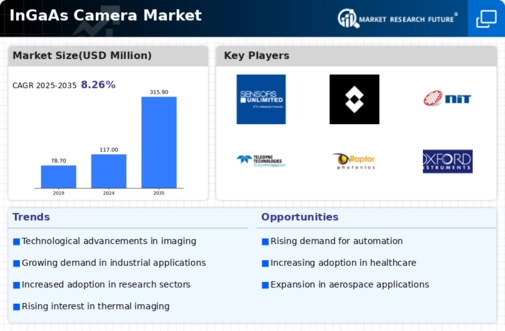

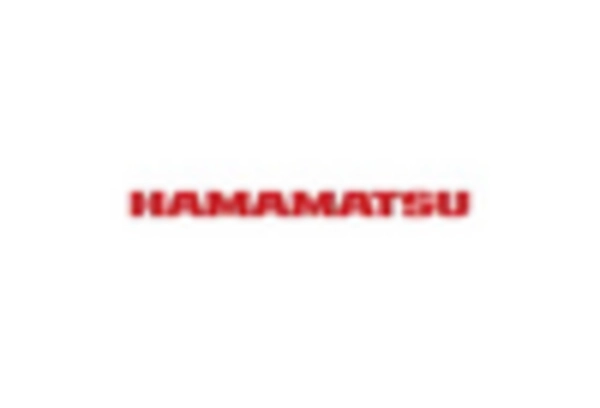
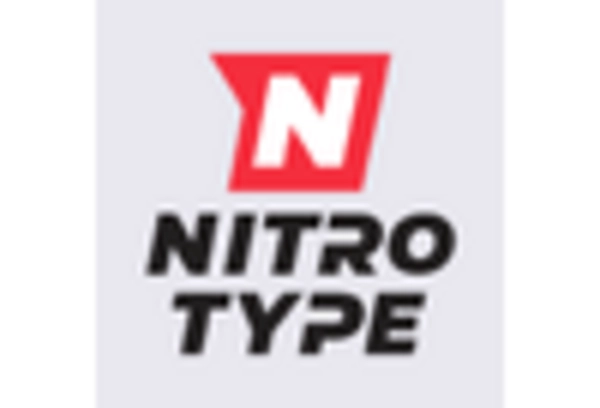
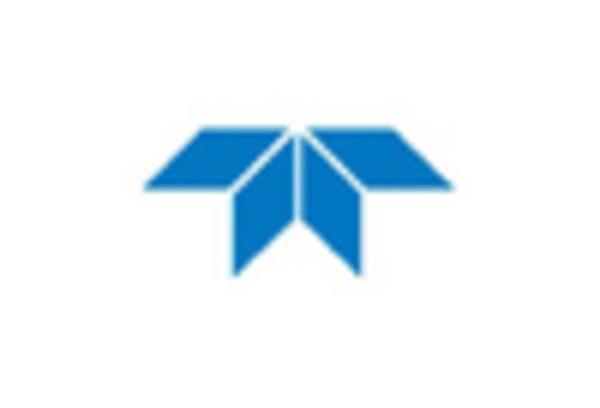
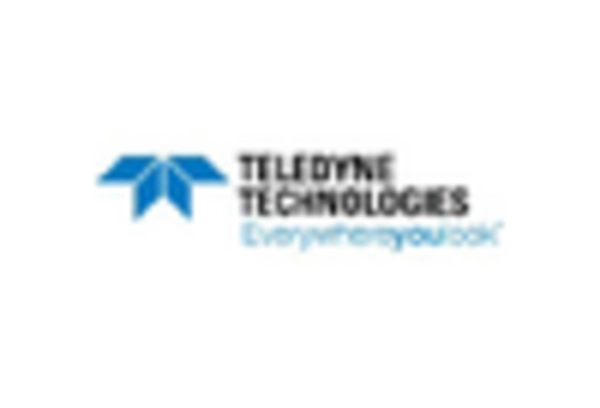
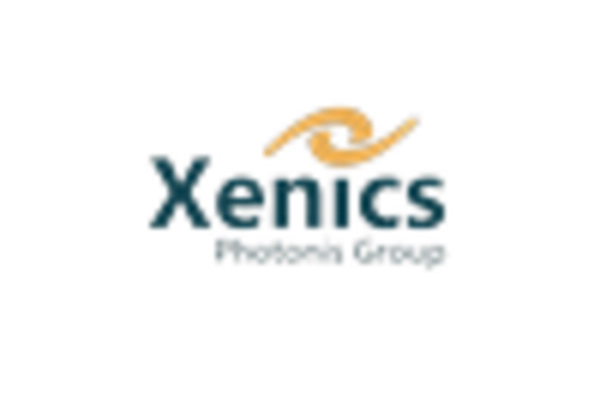









Leave a Comment